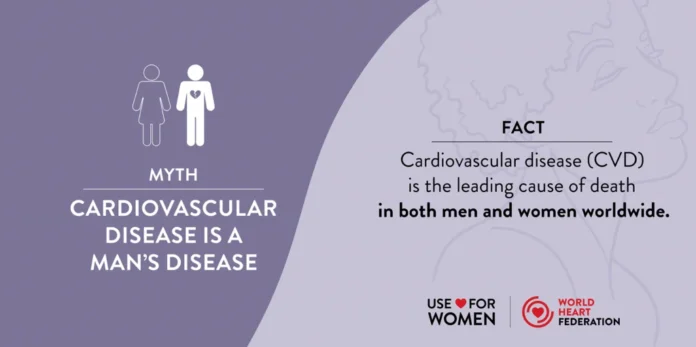The Allan Labor Government has used World Heart Day as a powerful reminder for Victorians to understand their personal risk of cardiovascular disease and to recognise the warning signs of a heart attack—particularly for women, whose symptoms are too often overlooked.
At the heart of the campaign is the message that heart disease remains Australia’s leading cause of death, responsible for more than one million cases nationwide. Globally, it is also the number one killer of women, yet gender differences in diagnosis and treatment continue to place women at risk. According to recent figures, an average of 20 Australian women die each day from heart-related conditions.
Gender Differences in Symptoms and Diagnosis
While men experiencing a heart attack are typically associated with crushing chest pain, pain radiating down the left arm, nausea, and shortness of breath, women’s early signs often appear differently. They may feel dizzy, fatigued, or light-headed, with symptoms later progressing to jaw or neck pain. Too often, these symptoms are misinterpreted as anxiety or panic attacks, leading to delayed diagnosis and treatment.
Minister for Health Mary-Anne Thomas stressed that the lack of awareness about these differences contributes to unnecessary deaths. “Women’s heart health has been overlooked for far too long,” she said. “This World Heart Day, we’re proud to stand with the Victorian Heart Hospital to spotlight the unique risks women face and to ensure they get the care they deserve.”
Investment in World-Class Cardiac Care
To ensure access to cutting-edge treatment, the Allan Labor Government has backed the $577 million Victorian Heart Hospital in Clayton, Australia’s first specialist cardiac facility. Operated by Monash Health, the hospital represents a new era in cardiovascular care, supported by $135 million in annual operating funds.
The hospital has the capacity to handle more than 200 inpatients, perform 2,000 cardiac surgeries, manage 28,000 emergency presentations, and provide 108,000 consultations annually. By combining clinical care, education, and research under one roof, it has become a hub for medical innovation. Importantly, it also houses a dedicated Women’s Heart Health Clinic—an Australian first—ensuring that female-specific needs are addressed by trained specialists.
Women’s Health Research Catalyst Grants
The Victorian Government has also committed $2.3 million toward the Women’s Health Research Catalyst Grants, which fund studies into health issues that disproportionately or uniquely affect women. One notable project led by Dr. Esther Davis at the Victorian Heart Hospital and Monash University is exploring how mammogram screenings can also help identify cardiovascular risk earlier. This cross-disciplinary research highlights the government’s effort to bridge gaps in preventive care.
Why Women’s Heart Health Matters
Cardiovascular disease is sometimes wrongly viewed as a predominantly male condition. Yet, global data consistently show that women are at equal or even greater risk of severe outcomes. Studies by the World Health Organization confirm that heart disease remains the top killer of women worldwide, surpassing cancers and other chronic illnesses. In Australia, women often arrive at hospitals later than men during cardiac emergencies due to misdiagnosis or underestimation of symptoms, which reduces survival rates and recovery outcomes.
Experts argue that raising awareness about these differences is as important as building new hospitals. Public health campaigns must address stigma, encourage women to trust their instincts, and ensure that clinicians are better trained to spot atypical presentations.
Community and Professional Engagement
World Heart Day is not only about highlighting risks but also about providing practical guidance. Victorians are being urged to learn CPR, know emergency procedures, and schedule regular check-ups. At the same time, health professionals are being called to challenge biases in diagnosis and treatment.
Community-based initiatives supported by the Victorian Government aim to extend beyond hospitals into schools, workplaces, and local organisations. By equipping everyday people with knowledge, the goal is to reduce the number of preventable deaths and improve long-term quality of life.
Broader Implications for Australian Healthcare
The Victorian model is being closely watched across the country as other states consider whether to replicate its specialised approach. With rising healthcare costs, limited resources, and an ageing population, gender-responsive health services could form part of a wider strategy to improve efficiency and outcomes in public health.
By coupling clinical excellence with targeted research, the Victorian Heart Hospital sets a precedent: medical systems must account for gender, not just in reproductive health but in all aspects of care. Cardiovascular disease is the proving ground for this approach.
Looking Ahead
As World Heart Day draws attention to these issues, the message is clear: women deserve equal recognition and tailored care in the fight against heart disease. The Victorian Government’s investments demonstrate that meaningful change requires both infrastructure and cultural shifts in medicine.
Minister Thomas captured the sentiment with urgency: “This World Heart Day, we’re reminding Victorians to familiarise themselves with the warning signs and what to do in case of a heart attack. Awareness saves lives, and women deserve nothing less than equal protection.”
By elevating women’s cardiovascular health to the forefront of policy, research, and public conversation, Victoria is setting a benchmark for the rest of Australia and beyond. The challenge now is to sustain momentum—turning awareness into lasting reductions in heart-related deaths for women everywhere.
